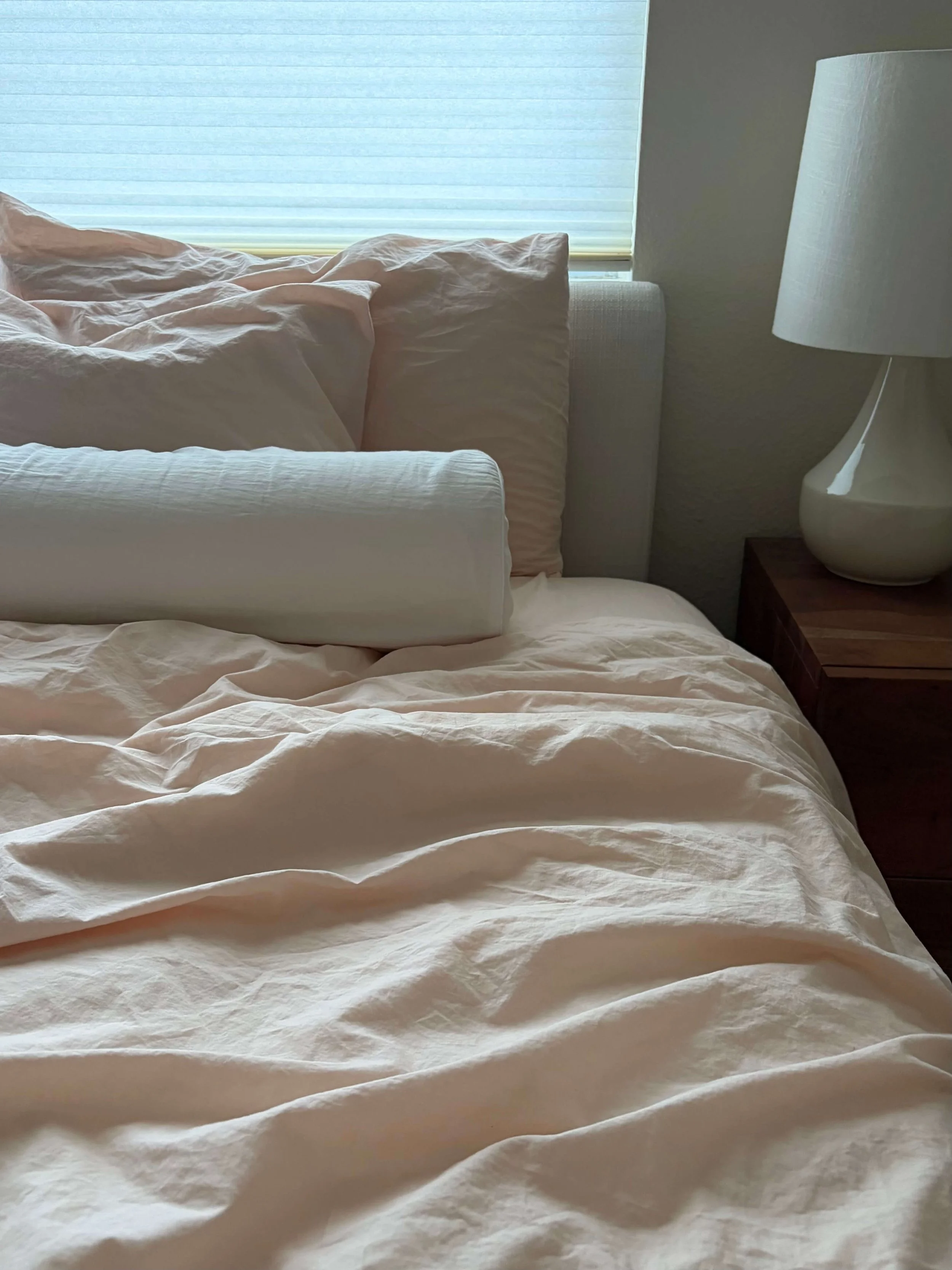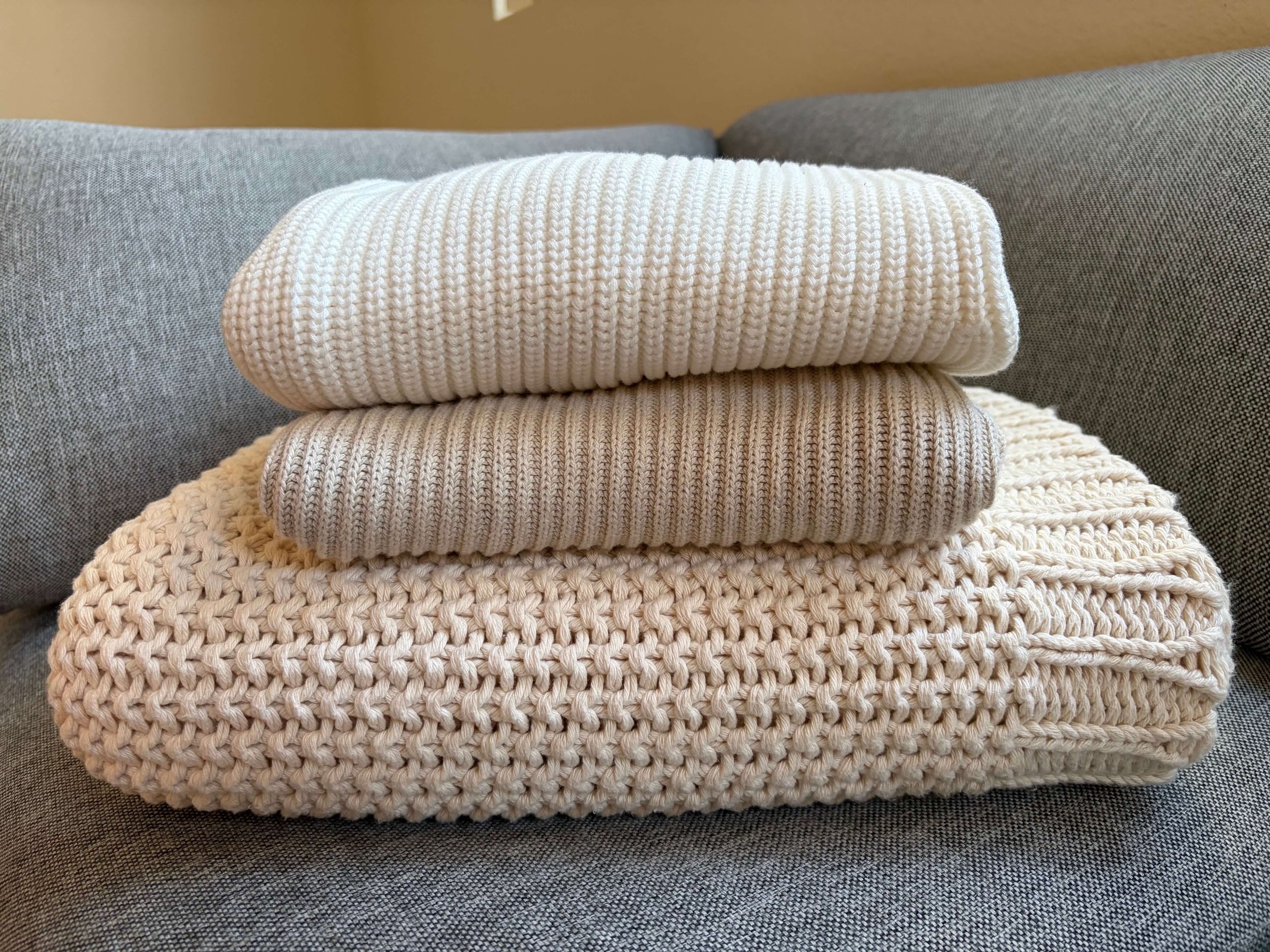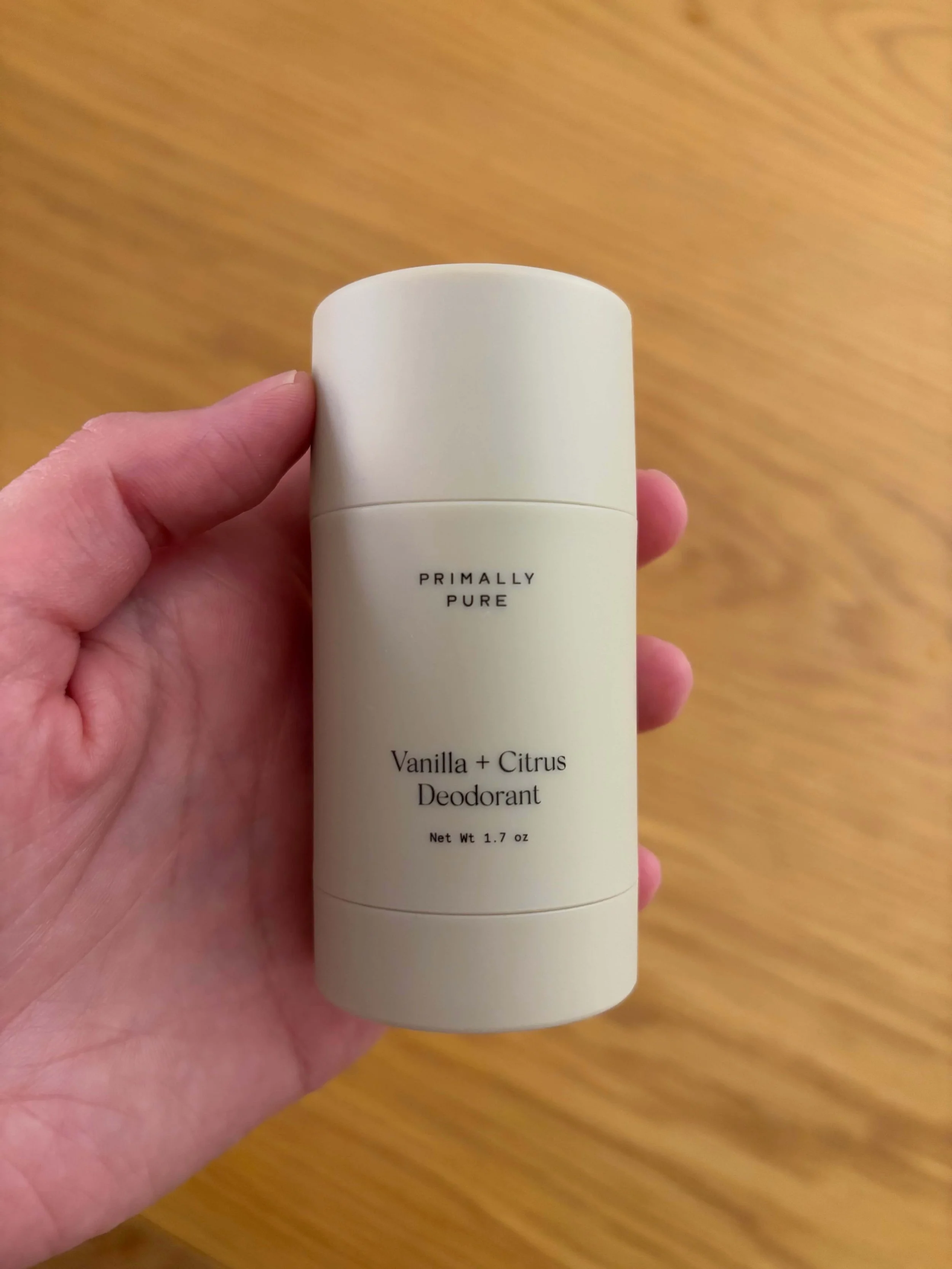Ultimate Guide to Non-Toxic + Organic Bedding
If you’ve ever woken up sweaty, itchy, or just not rested, your bedding might be to blame. Most traditional bedding is made with synthetic materials and harsh chemicals that can affect everything from your skin to your sleep quality.
The good news? There are non-toxic and organic bedding options that make it easy to create a healthier, more comfortable sleep space — without sacrificing style or softness.
Let’s break it all down so you can make an informed decision for your family and your home.
Why Non-Toxic Bedding Matters
We spend at least one-third of our lives sleeping — which means our sheets, duvets, and pillowcases are in constant contact with our skin.
Traditional bedding is often made from conventional cotton production, which relies heavily on the use of pesticides and bleaches, or synthetic fabrics like polyester, which are derived from plastic and can trap heat and moisture. Many of these are treated with flame retardants, formaldehyde, and other toxic chemicals designed to make products wrinkle-free or stain-resistant — I don't know about you, but I don't want any of these things touching my skin.
These harmful substances can linger in your home, off-gassing into the air and coming into direct contact with your skin. Over time, this exposure can contribute to skin irritation, respiratory issues, and even disrupt hormones. For sensitive skin or allergy-prone families, switching to chemical-free bedding is one of the simplest ways to create a healthier sleep environment.
And while it might sound like a small swap, your bedding touches your skin more than almost anything else in your home — so this one change can truly make a difference for your overall health.
Ready to go beyond bedding? Check out these 7 Sustainable and Non-Toxic Sleep Essentials for Every Home.
Organic vs. Conventional Bedding
Here’s a quick breakdown of what separates organic bedding from the conventional kind:
| Feature | Conventional Bedding | Organic Bedding |
|---|---|---|
| Materials | Synthetic fibers, non-organic cotton | Natural, GOTS-certified organic cotton, linen, wool, or bamboo |
| Chemicals Used | Often treated with formaldehyde, bleach, flame retardants, or softeners | Free from toxic and harsh chemicals |
| Environmental Impact | High water use, heavy pesticide reliance | Low environmental impact and sustainable farming practices |
| Feel + Breathability | May trap heat and moisture | Naturally breathable, temperature-regulating |
| Health Benefits | Possible exposure to harmful chemicals | Promotes a safer, toxin-free sleep space |
If you’ve been using traditional bedding for years, don’t panic — you don’t need to replace everything overnight. Start with one piece (like GOTS certified organic cotton sheets) and work your way toward a fully non-toxic bedding setup over time.
What to Look for in Organic Bedding
When choosing organic bedding, certifications are your best friend. They take the guesswork out of what’s truly safe versus what just looks eco-friendly on the label.
Global Organic Textile Standard (GOTS)
The GOTS certification is the highest level of assurance you can get. It means your bedding is made from organic materials and processed without toxic chemicals or synthetic dyes. It also ensures ethical working conditions throughout the supply chain.
Fair Trade Certified
If you see a Fair Trade Certified logo, that means the workers who grew and produced the materials were paid fairly and worked under safe conditions. It also supports sustainable farming practices that protect the planet and community health.
OEKO-TEX® Standard 100
The OEKO-TEX® certification doesn’t necessarily mean organic, but it does guarantee that the final product has been tested for harmful chemicals and toxic residues. It’s a great step for families transitioning away from chemically-treated sheetsor synthetic materials.
Read Certifications That Actually Matter (and the Ones That Don’t) if you want to learn how to spot important labels, so you can shop with confidence.
Common Organic Materials You’ll See
Choosing the right organic fabrics depends on how you like to sleep and the climate where you live. Here’s a quick breakdown:
Organic Cotton – Soft, breathable, and easy to care for. Organic cotton sheets are a popular choice for their versatility and durability.
Linen – Made from the flax plant, linen is cooling and moisture-wicking, making it ideal for hot sleepers. It softens beautifully over time.
Wool – Naturally temperature-regulating and resistant to dust mites. A wonderful option for colder climates.
Silk – A luxury bedding material that’s gentle on sensitive skin, though not always the most sustainable choice.
Each natural material has its place in a well-rounded bedding setup — and because these are made without synthetic fibers, they’re less likely to cause skin irritation or trap heat.
The Truth About Thread Count
You’ve probably heard that the higher the thread count, the better the bed sheets — but that’s only half true.
A sky-high thread count (like 1000 or 1500) doesn’t always mean better quality. In fact, those sheets often use synthetic materials or multi-ply cotton fibers that can make fabric feel heavy and less breathable.
For organic cotton bedding, the sweet spot is around 300–400 thread count. That range gives you softness, breathability, and durability without compromising comfort.
So instead of chasing numbers, focus on the quality of the cotton fibers and organic certification. That’s what really determines how your bedding feels in the long run.
Non-Toxic Bedding Essentials
Here’s what to prioritize when transitioning your bedroom into a healthy environment for safe, toxin-free sleep:
Sheets + Sheet Sets – Choose organic cotton bedding or linen sheets with a breathable weave. Skip chemically finished options that promise “wrinkle-free.”
Duvet Covers + Blankets – Look for organic blankets or duvet covers made with plant-based dyes and natural fibers.
Mattress Covers + Protectors – Avoid polyurethane foam and instead choose organic cotton or natural wool mattress covers. If you're needing something waterproof (like us with little one's crawling into our bed), this is the one we use by Naturepedic.
Pillows – Swap synthetics for natural latex, wool, or down alternatives that are certified organic.
Laundry Detergents – Use gentle, non-toxic detergents that are free from artificial fragrances and brighteners. We use Branch Basics in our home.
Each switch supports a healthier home and reduces your family’s exposure to unnecessary toxic chemicals.
Sustainable + Ethical Bedding Brands to Know
Whether you’re looking for affordable prices or a luxurious feel, these eco-friendly alternatives deliver comfort without compromise:
Avocado Green Mattress – Makers of award-winning, GOTS-certified organic cotton sheets and green mattresses made in the United States.
Coyuchi – Known for luxury sheets made from organic fabrics and low environmental impact production.
Boll & Branch – A Fair Trade brand creating high quality, ethically made organic cotton sheets.
Nest Bedding – Offers sustainable bedding and non-toxic mattress options for a safe sleep environment and sweet dreams. Check out our review on their GOTS organic + fair trade sheets.
Under the Canopy – Another wonderful brand offering organic, non-toxic bedding options.
Quick Tips for the Best Sleep
Keep your bedroom cool to help regulate body temperature.
Wash bedding weekly with mild, non-toxic detergents.
Avoid chemically-treated sheets and synthetic fabrics.
Rotate organic sheet sets seasonally — flannel sheets for winter, classic percale or linen sheets for summer.
Choose breathable natural bedding to promote a good night’s sleep.
Final Thoughts
Choosing non-toxic bedding materials is one of the simplest ways to support your health, your family’s comfort, and the natural world around you.
You don’t have to replace everything at once — start small with one organic blanket or fitted sheet, and build your collection slowly. Every step toward toxic-free bedding is a step toward a healthier home and a better night’s rest.
Here’s to sweet dreams, healthy homes, and bedding that feels as good as it looks.
Keep Reading
If you’re ready to dive deeper into creating a truly healthy sleep space, here are a few posts you’ll love:
Eco-Friendly Luxury: Why Nest Bedding Is the Upgrade Your Sleep Needs — My honest review of Nest Bedding’s sustainable, non-toxic, and oh-so-comfortable bedding.
How to Read a Non-Toxic Label (When Everything Claims to Be Clean) — Decode the fine print on bedding, skincare, and home products to make safer, smarter choices for your family.
Our Sustainable and Non-Toxic Favorites — A roundup of our tried-and-true products that make building a healthier home feel effortless.































